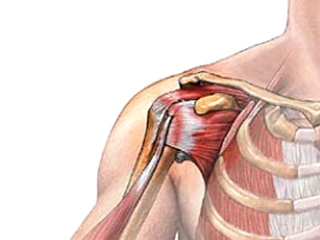Subacromial space is located in the shoulder. It is a passage between the superior portion of the head of the humerus and the inferior portion of the acromion. The term acromion means a coracoid process.
In the space mentioned before we find the rotator cuffs. It is formed by the supraspinatus tendon, subscapularis tendon and teres minor. Apart from rotator cuffs located in the subacromial space, we can see the subacromial bursa. That structure is mainly responsible for the decrease of friction and free motion of the rotator cuff.
Over the years, subacromial space has progressively reduced because of the appearance of osteophytes in the acromion. The osteophytes are bony projections that form along joint margins as a person ages and they are related to any changes in bone formation due to degeneration or aging as it has been said.
The narrowing of this space causes an improperly functional situation for the tendon. This can result in pain and tendon inflammation. If the situation is prolonged it may cause a tendon rupture.
Subacromial syndrome is usually treated conservatively: antiinflammatory medicines, physiotherapy or exercises among others. If this treatment does not take effect , therapeutic injections of cortisone derivatives or growth factors can be used for persistent subacromial syndrome.
Finally we have the surgical option. Subacromial syndrome may be treated with arthroscopic shoulder surgery, so that surgeons can widen the subacromial space by excision of osteophytes and repair the damaged tendon if needed.






